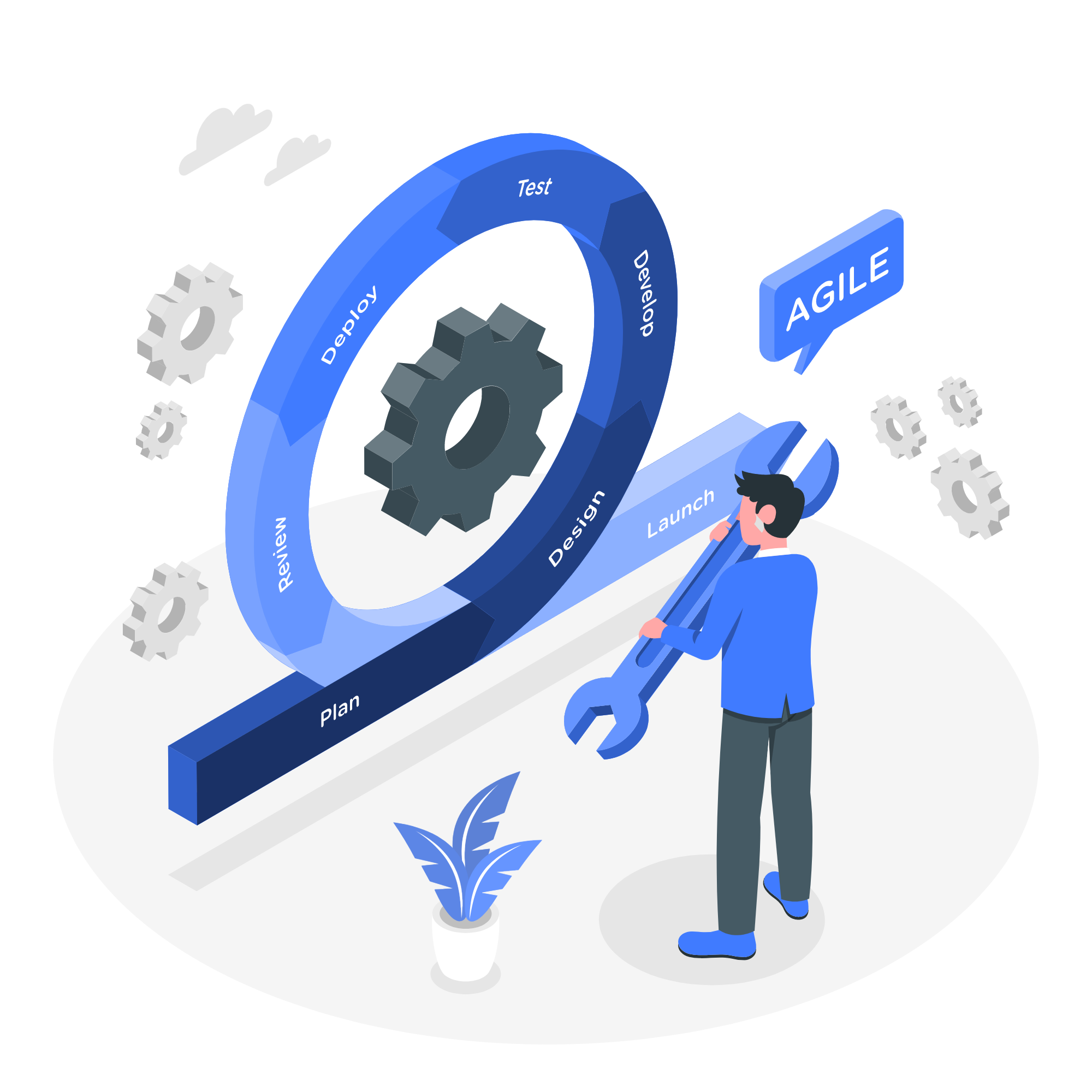Subscribe
Subscribe to EduBridge Blogs
The development process is guided by agile methodology to ensure timely value delivery. Its heart and soul are best practices. Agile Testing Process is based on the principles of flexible planning, iterative delivery, and ongoing development.
Software testing is one discipline that is extremely crucial. It adheres to Agile’s fundamental tenets and advances its goals. Like coding, it is not a distinct stage of development but rather an essential part of it. These two are carried out incrementally and interactively.
The fundamental issue is that software testing is more complicated than it first appears. It must first be properly introduced before being put into practice within the organization. Teams may need to be reorganized, and the plan may need to be revised.
However, don’t worry—we’ve got you covered. Here’s how to be flexible and provide working, high-value

A Paradigm Shift
The adjustments that follow are extensive and not just aesthetic. In contrast to Waterfall, the agile approach of working is grounded in a distinct business culture and environment. The agile process in software testing is no different.
In a nutshell, organizations need to be more flexible, adaptive, and collaborative. Software releases that are frequent and iterative are encouraged for teams. Sprint-based work makes it simple to pivot and make changes that may have been affected by changing circumstances.
Similar to that, testing starts early and is anticipated to produce value frequently. Testers are required to adapt to this changing business environment. They need to adjust how they conduct testing, when they do it, and how they work with developers.
The fundamental issue is that not enough time is available to test everything. Setting requirements in a priority order is the solution. It establishes what is accomplished and when.
Communication and Collaboration Are Important
Members need to discuss their work a lot more frequently than they previously did for the Agile approach to take root.
Throughout the whole project lifecycle, close communication with developers is essential. The days of testing teams working autonomously and depending on static documentation are long gone.
Agile uses minimal documentation. The importance of adjusting to change far outweighs that of following a plan. The software development process is guided by open and continuous communication across all teams.
Meetings happen every day, and they produce priceless ideas. The absence of impediments between development and operations is ideal. The same is true of departmental information silos.
QA testers should be actively involved in backlog refinement and sprint planning rather than remaining on the sidelines. They share their perspectives on daily stand-up meetings and make the most of getting direct customer expectations and feedback.
Another thing to keep in mind is that client involvement is a part of agile collaboration. There is no need to stress about contract negotiations. The needs are ranked in priority order by user stories.
All of this echoes a core Agile principle: processes and tools are secondary to people and their interactions.

Important Test Models
Requirements can be used in different ways for various Sprints because they vary frequently. Your decision here will be influenced by the Agile methodology you choose (Scrum, Extreme Programming, Kanban, etc.).
There are four popular ways to test software:
- Acceptance of Behavior Driven Development (BDD)
- Development that is test-driven (ATDD)
- Investigative Testing
- Tests conducted in sessions
You should carefully examine the advantages and disadvantages of each option.
The time between delivering the code and finishing the test is reduced, for instance, by exploratory testing. It raises the likelihood of writing code that actually works. The code is the testers’, and they are allowed to test how they see fit.
This kind of testing is unscripted and imitates what actual users might do. When there is a time crunch, it works well, but it occasionally backfires.
So, if you require more structure and accountability, session-based testing might be a better option. It does not place a great deal of reliance on the knowledge and expertise of testers alone.
You’re Almost There
You have one crucial step left to complete after choosing your testing strategy.
It comprises integrating testing into the Agile delivery methodology and including testers as early in the development process as is practical. There isn’t much time to gather requirements, so testing should be done often.
However, efficiency must not be compromised in favor of speed. Teams must think carefully about what and how they test as a result.
They also have a tendency to get increasingly involved in other jobs as the project progresses. One of the cross-functional areas that might be incorporated into their workflow is code delivery and integration.
It’s true that this may already feel like a lot to handle. But do not worry.
Platforms for automation can be used to speed up testing and reporting. They can ease the workload on employees and prevent burnout.
And as already mentioned, testers aren’t exactly left on their own. On the contrary, they work closely with developers to achieve their goals. The greatest strategy for frequent, excellent deployment in a limited amount of time is this.
Agile software testing is more than a buzzword, it is a necessity for any agile development project. Make testers essential to development— they should be active participants every step of the way. Besides that, you have to adopt the right mindset and refine your strategies. Integrate testing tools and practices that scale well with your company and fit its culture. Empower team members with more resources and turn them into quality champions. IBM Software Testing Course With Placement Guarantee how to make the most out of your software testers and get ahead in today’s competitive market.
Recent Blogs
Related Blogs
Accelerate Your Career with Expert Guidance and Guaranteed Job*!
"*" indicates required fields





